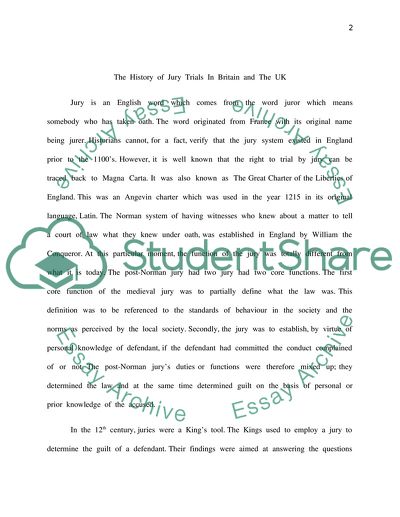Cite this document
(“The Place of a Jury Trial in Modern Essay Example | Topics and Well Written Essays - 3000 words”, n.d.)
The Place of a Jury Trial in Modern Essay Example | Topics and Well Written Essays - 3000 words. Retrieved from https://studentshare.org/law/1608578-trial-by-jury-has-no-place-in-modern-britain-critically-examine-and-analyse-this-statement
The Place of a Jury Trial in Modern Essay Example | Topics and Well Written Essays - 3000 words. Retrieved from https://studentshare.org/law/1608578-trial-by-jury-has-no-place-in-modern-britain-critically-examine-and-analyse-this-statement
(The Place of a Jury Trial in Modern Essay Example | Topics and Well Written Essays - 3000 Words)
The Place of a Jury Trial in Modern Essay Example | Topics and Well Written Essays - 3000 Words. https://studentshare.org/law/1608578-trial-by-jury-has-no-place-in-modern-britain-critically-examine-and-analyse-this-statement.
The Place of a Jury Trial in Modern Essay Example | Topics and Well Written Essays - 3000 Words. https://studentshare.org/law/1608578-trial-by-jury-has-no-place-in-modern-britain-critically-examine-and-analyse-this-statement.
“The Place of a Jury Trial in Modern Essay Example | Topics and Well Written Essays - 3000 Words”, n.d. https://studentshare.org/law/1608578-trial-by-jury-has-no-place-in-modern-britain-critically-examine-and-analyse-this-statement.


